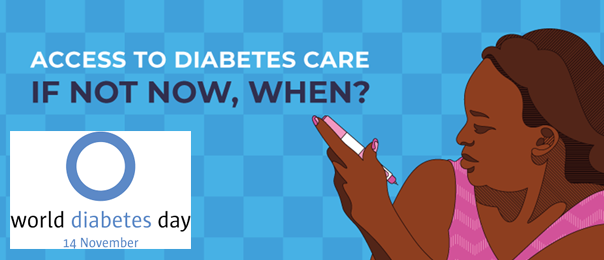14 November of each year is observed as World Diabetes Day. It is observed to make people aware of the treatment, prevention, and symptoms.
World Diabetes Day was established in 1991 by the International Diabetes Federation with support from WHO. In 2006, it became an official UN day. 14 November marks the birthday of Canandian medical scientist and Nobel laureate Sir Frederick Grant Banning. He received the Nobel Prize in Physiology or Medicine for 1923 for the discovery of insulin, along with Charles Best and John James Rickard Macleod in 1922.
World Diabetes Day Themes
Themes of previous World Diabetes Day campaigns have focused on different factors that influence the risk of diabetes and its complications:
2021: Access to Diabetes Care: If not now, when?
2020: The Nurse and Diabetes.
2018–2019: The Family and Diabetes – diabetes concerns every family.
2017: Women and diabetes – our right to a healthy future.
2016: Eyes on Diabetes.
2015: Healthy Eating.
2014: Go Blue for Breakfast.
2013: Protect our Future: Diabetes Education and Prevention.
What is Diabetes?
Diabetes is a disease that affects how the body uses glucose, a sugar that is the body's main source of fuel. Diabetes, also known as diabetes mellitus, happens when the glucose in your blood stays high.
High levels of glucose in your blood everyday can make you feel unwell. If not treated, over time the glucose can also cause damage to your eyes, feet, kidney, heart and brain.
There are two major types of diabetes are type 1 and type 2.
If you have type 1 diabetes it means your pancreas is not making the insulin your body needs. There is no know cause or cure for type 1 diabetes.
If you have type 2 diabetes it means your pancreas is not making enough insulin or the insulin it is making is not working properly. Generally, you can manage type 2 diabetes by eating healthy foods and being active. Sometimes medications like tablets or insulin may also be needed.
Further Reading

